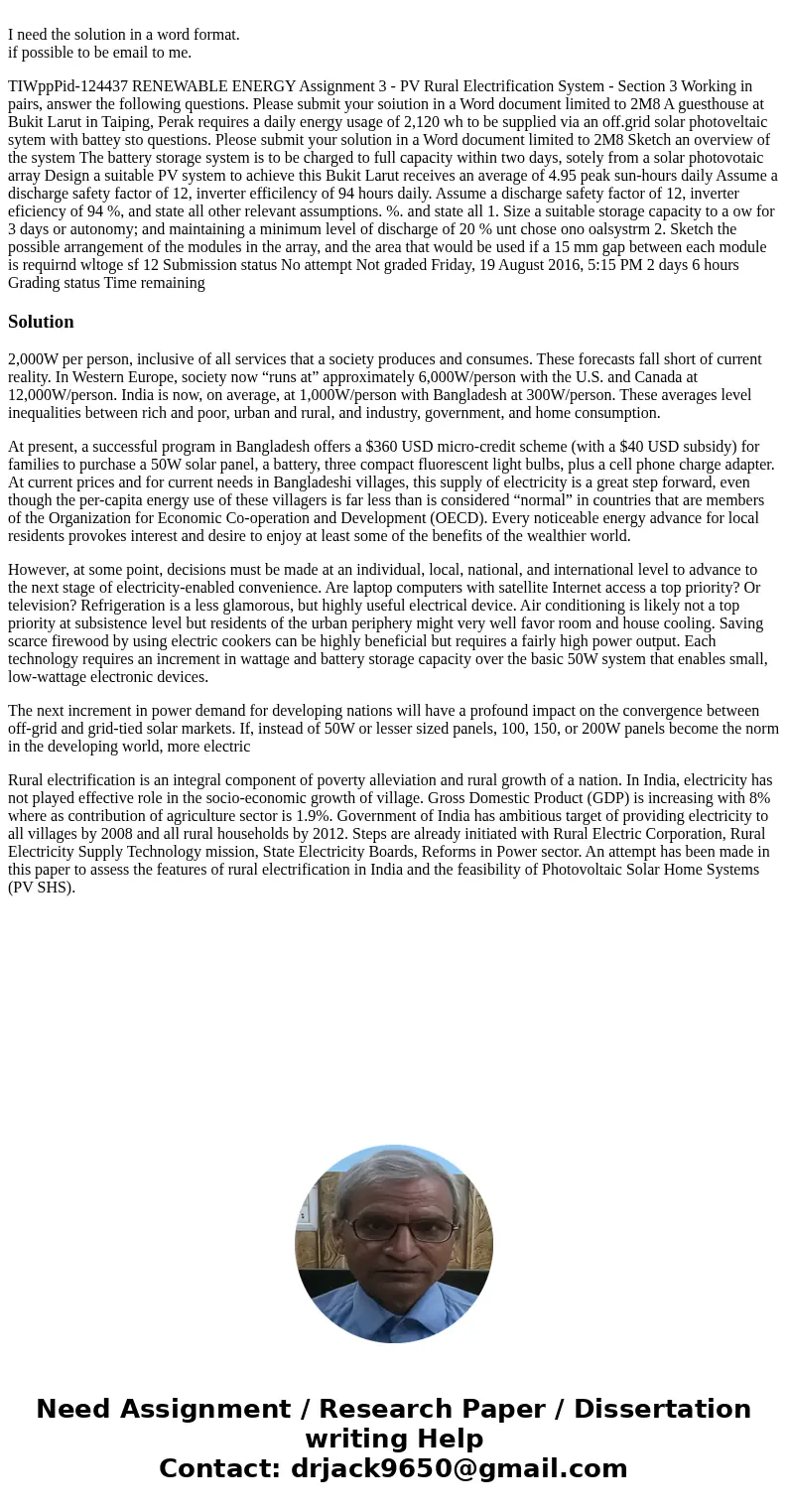I need the solution in a word format if possible to be email
I need the solution in a word format.
if possible to be email to me.
Solution
2,000W per person, inclusive of all services that a society produces and consumes. These forecasts fall short of current reality. In Western Europe, society now “runs at” approximately 6,000W/person with the U.S. and Canada at 12,000W/person. India is now, on average, at 1,000W/person with Bangladesh at 300W/person. These averages level inequalities between rich and poor, urban and rural, and industry, government, and home consumption.
At present, a successful program in Bangladesh offers a $360 USD micro-credit scheme (with a $40 USD subsidy) for families to purchase a 50W solar panel, a battery, three compact fluorescent light bulbs, plus a cell phone charge adapter. At current prices and for current needs in Bangladeshi villages, this supply of electricity is a great step forward, even though the per-capita energy use of these villagers is far less than is considered “normal” in countries that are members of the Organization for Economic Co-operation and Development (OECD). Every noticeable energy advance for local residents provokes interest and desire to enjoy at least some of the benefits of the wealthier world.
However, at some point, decisions must be made at an individual, local, national, and international level to advance to the next stage of electricity-enabled convenience. Are laptop computers with satellite Internet access a top priority? Or television? Refrigeration is a less glamorous, but highly useful electrical device. Air conditioning is likely not a top priority at subsistence level but residents of the urban periphery might very well favor room and house cooling. Saving scarce firewood by using electric cookers can be highly beneficial but requires a fairly high power output. Each technology requires an increment in wattage and battery storage capacity over the basic 50W system that enables small, low-wattage electronic devices.
The next increment in power demand for developing nations will have a profound impact on the convergence between off-grid and grid-tied solar markets. If, instead of 50W or lesser sized panels, 100, 150, or 200W panels become the norm in the developing world, more electric
Rural electrification is an integral component of poverty alleviation and rural growth of a nation. In India, electricity has not played effective role in the socio-economic growth of village. Gross Domestic Product (GDP) is increasing with 8% where as contribution of agriculture sector is 1.9%. Government of India has ambitious target of providing electricity to all villages by 2008 and all rural households by 2012. Steps are already initiated with Rural Electric Corporation, Rural Electricity Supply Technology mission, State Electricity Boards, Reforms in Power sector. An attempt has been made in this paper to assess the features of rural electrification in India and the feasibility of Photovoltaic Solar Home Systems (PV SHS).

 Homework Sourse
Homework Sourse